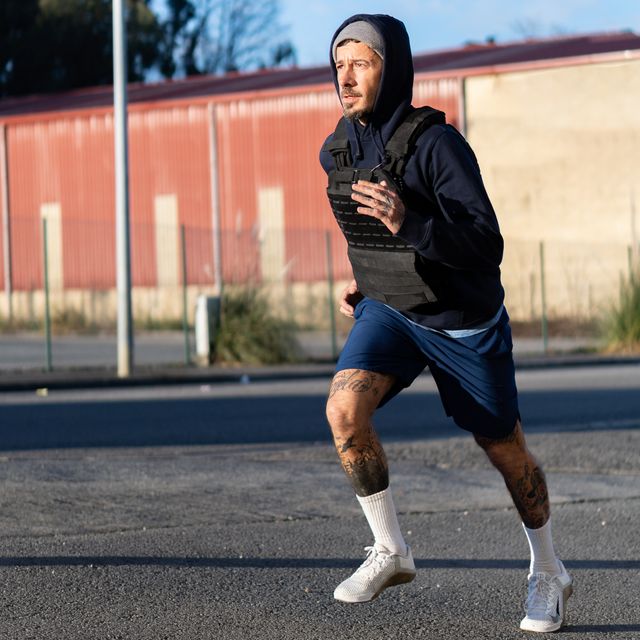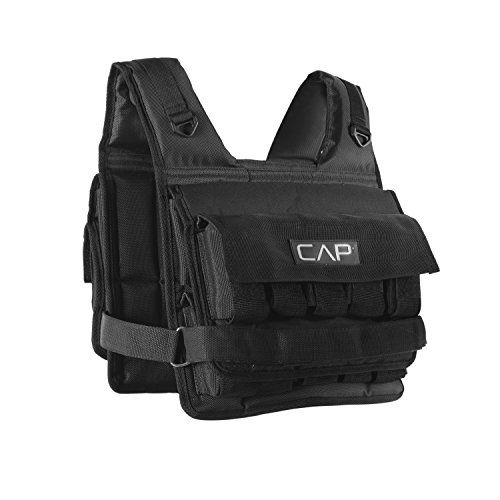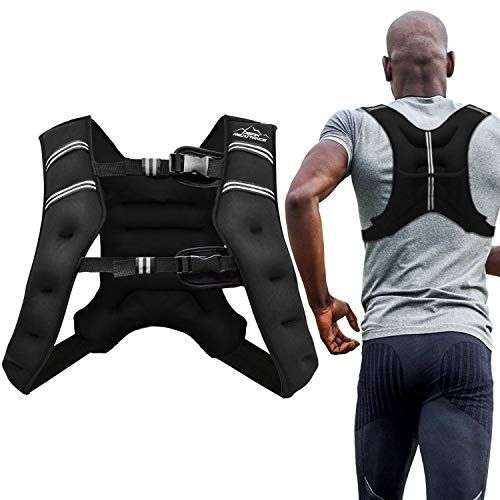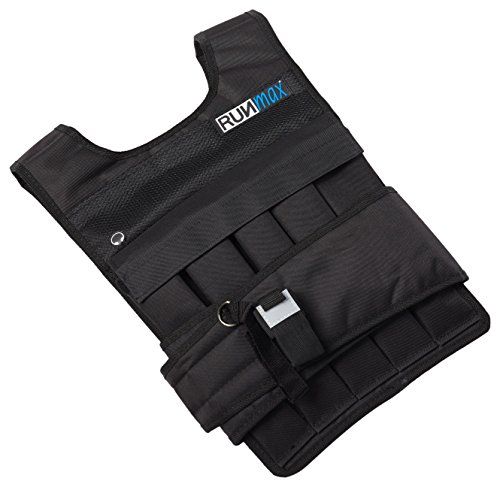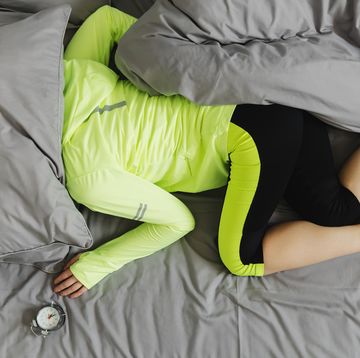Imagine that you are training for a 10K and, during one of your weekly runs, you carry around a 10-pound weight. It might slow you down, but imagine the freedom (and speed!) you’d feel the next time you ran without that weight. That’s basically the theory behind the benefits of running in a weighted vest. But is strapping on some pounds while you clock miles right for you? Should you wear a weighted vest in an effort to get faster?
Because the research available is sparse, Runner’s World asked running and fitness experts to break down the benefits, risks, and details about running in a weighted vest. Here’s what to know, including the research that is out there.
What are the benefits of running in a weighted vest?
Wearing a weighted vest while walking or running essentially increases the load on both your muscles and connective tissues. “That weight increase brings a challenge and a new stressor on the body, and change only occurs when the body is stressed,” says Mat Forzaglia, certified personal trainer and founder of Forzag Fitness in New York City. “By adding stress, you can improve your overall fitness.”
Sure, you can add stress by doing speed intervals or lifting weights, but “the idea is that by increasing weight while walking or running, the athlete is making weighted training as specific to their sport as possible,” explains Jason Fitzgerald, USATF certified coach and creator of Strength Running in Denver.
Of course, when you first strap on a vest, you likely won’t be able to run as fast as you typically do, but you will still reap rewards. “Weighted walks or low-intensity running are more challenging than the same activity without a vest, so respiration will be higher at lower intensities, and that can help boost endurance while reducing an athlete’s risk of injury,” says Fitzgerald. “Plus, added strength gains will help mitigate injury risk—and staying healthy is one of the best performance enhancers possible.”
There are a few studies to back up the benefits Forzaglia and Fitzgerald mention. For example, a 2022 systematic review of 11 studies published in Sports Biomechanics found that wearing a weighted vest during three to seven weeks of sprint training improved sprint times. The weight worn was equal to about 6 percent to 19 percent of body mass. (The researchers did note that we need more science to back up the benefits.)
Another 2012 study, involving just 17 men, published in The Journal of Strength and Conditioning Research found that wearing a weighted vest during daily activities may improve running times. Researchers concluded that wearing 5 to 10 percent of body weight was most effective, and suggested wearing the vest for 50 percent of training sessions for three or four weeks.
Can a weighted vest help you lose weight or build muscle?
Wearing a vest while running does burn more calories than running without one, but that doesn’t mean you will necessarily lose weight.
“Adding weight and stress to your runs will help burn more calories, but how quickly you lose weight will vary depending on your body composition, nutrition, and other factors,” says Kenny Santucci, NASM-certified personal trainer and creator of STRONG New York in New York City.
One study does support the idea that wearing a weighted vest can help in weight loss. Swedish researchers examined 69 people with body mass indexes between 30 and 35 who wore weighted vests for eight hours a day for three weeks. One group wore a vest weighing 11 percent of body weight and another wore a vest equal to one percent of their body weight. Most participants lost weight, but those who wore the heavier vest also lost fat mass. (Keep in mind some of the subjects included in the study did report some adverse events, like pain.)
One last thing: Running with a weighted vest won’t change muscle size or shape the way resistance training does. “It won’t be like if you were to squat or deadlift,” says Forzaglia. “It can help you learn to endure heavier weight for longer periods of time.” But it won’t work your muscles in the same way strength training does.
Is there anyone who shouldn’t run with a weighted vest?
If you recently had spine or heart surgery, it’s probably best to avoid running in a weighted vest, at least until you’re fully recovered and your doctor says it’s okay, says Brian Beutel, D.P.T. of Forge Physio in Bethlehem, Pennsylvania. Also, if you have a diagnosis of chronic obstructive pulmonary disease (COPD) or any condition that makes breathing without added weight challenging, then you also probably want to ditch the extra weight while clocking miles.
If you’ve never run before, or you don’t typically use weights to train, Santucci doesn’t recommend running with a weighted vest as the joints won’t be prepared to handle the load.
How do you make sure you’re running in a weighted vest properly?
“Running with extra weight does increase the stress of running, so it can be an injury risk,” explains Fitzgerald. “I’d advise that you begin by hiking [or walking] with a weighted vest, and once that feels good, reserve only very slow running for the vest.” In other words, strap on a weight vest for shorter, easier runs.
Likewise, extra weight isn’t appropriate on recovery days as the extra load is a workout, not a way to rest. Forzaglia also suggests using a weight vest during the off-season. “It’s a tool you can utilize in the strength-training block, early in the off-season,” he says. “It’s not something to try as you’re leading up to a race.”
What else should you know before you try running in a weighted vest?
Start with conventional strength training before adding a weighted vest to runs, says Beutel. He also advises that a runner should consider their overall goals to determine if they should go at it with a weighted vest. For example, are you aiming to increase mileage, speed, or prepare for upcoming races?
“With those goals, you could absolutely see a benefit, especially if you are increasing and recovering steadily. With weighted vests, like any added challenge, recovery (including sleep quality and duration, mood, soreness, and maintaining energy levels) can be challenged,” Beutel says.
If your goal is a faster pace or more mileage, Beutel suggests testing those numbers before you start running with a weighted vest so you have a baseline for comparison. Then, every two to four weeks, check the progress you’ve made and use that to determine if it’s worth continuing.
Beutel also says that runners can risk injury with any quick increases in weight load and stress. “The body is highly adaptable, but we humans like to rush the process and that can get us in trouble. Being mindful of the physiological processes that occur during training, individual recovery times, and being patient with the training plan can keep the injury risk low,” he says.
Finally Beutel suggests checking in with your body and being aware of how it feels running with a weighted vest. Ask yourself questions like: Is there any pain or concerns that linger? Do I improve over time at the same load? How does the next day feel?
How do you choose the right weight?
In order to not end up too sore—or worse, injured—you should start light, with a weight possibly even less than you think you can handle so your body can get used to this new load. “Err on the conservative side and wear enough weight that you just notice it at first,” says Fitzgerald. “You can always add more later.”
Santucci recommends starting with 10 pounds and then gradually increasing from there. “You’ll work up to the standard weight vest amount for women, which is 14 pounds, or men, which is 20 pounds,” he says. “Your goals will determine how much weight you add.”
Forzaglia recommends vests that have individual single pound or 2-pound weights that you can progressively add to the vest as you get stronger and feel more comfortable with the vest.
How often should you run with a weighted vest?
This really depends on your goals, but Beutel says, “slow adaptation is key for any new or increased stressors.” Doing too much too often with a weighted vest may end up sidelining you—and that goes for the amount of weight you run with, how many workouts you incorporate the vest into, and how long and hard you run with it.
“The frequency with which you wear a weight vest does depend on the race you’re training for but in general, a few times per week will work well for most runners,” says Fitzgerald.

Amy Schlinger is a health and fitness writer and editor based in New York City whose work has appeared in Men’s Health, Women’s Health, The New York Post, Self, Shape, Cosmopolitan, Glamour, and more; The National Academy for Sports Medicine Certified Personal Trainer (NASM-CPT) is extremely passionate about healthy living and can often be found strength training at the gym when she isn’t interviewing trainers, doctors, medical professionals, nutritionists, or pro athletes for stories.
